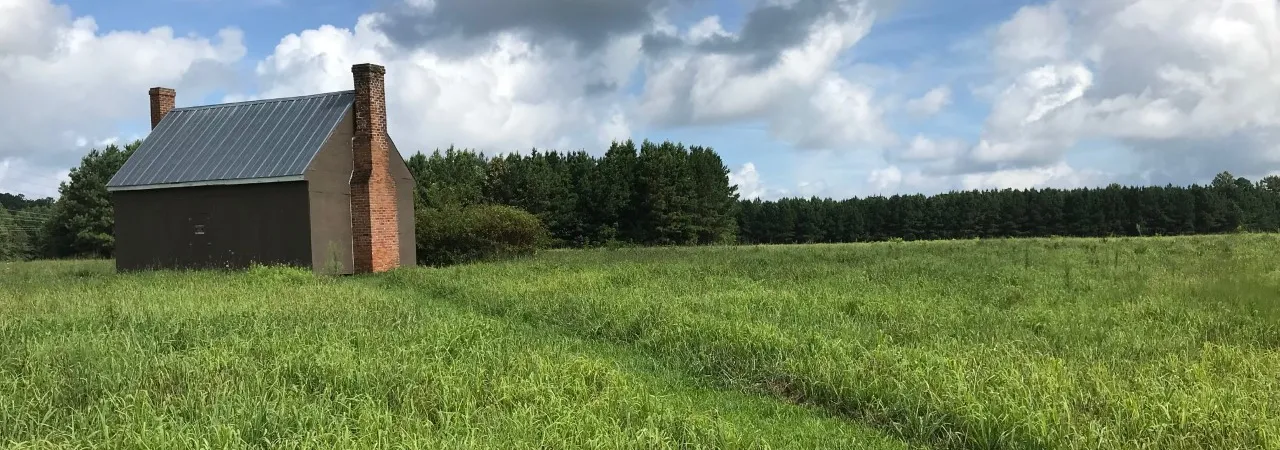
Reams Station Battlefield, Petersburg, Va.
160th Anniversary: 53 Acres Saved Forever at Reams’ Station and Deep Bottom
The summer of 1864 saw some of the most brutal and determined fighting of the Civil War, with now seasoned soldiers and generals resolute to bring the conflict to its end. As steadfast as the armies stood, so have we. Thanks to you, 160 years later, we can commemorate that summer of ’64 with 53 acres preserved forever associated with two of its notable battles, Reams’ Station and Second Deep Bottom.
Heart of the Battle
When it comes to preserving hallowed ground, sometimes good things come in small packages. That’s true for three of these preserved acres that lie at the heart of the June 29,1864, First Battle of Reams’ Station and sits at the center of the battlefield, which saw action again at the Second Battle of Reams’ Station August 25. These three acres are situated along the north side of what was then known as the Depot Road, today’s Reams Drive. Federal cavalry under Gen. August V. Kautz used the Depot Road to approach Reams’ Station on the morning of June 29, 1864. They immediately came under fire from Confederate artillery and infantry positioned near the railroad. The Federal cavalry dismounted and approached the railroad, capturing 50 soldiers from the 10th and 14th Alabama. Although impossible to specifically locate on the ground, this event occurred near or partially on these now preserved acres.
As more Federal cavalry arrived in the vicinity, their commander created a defensive line facing both north and east, encompassing this tract. Later in the day, the Confederates mounted a multi-pronged assault that broke the Federal line and sent the Union troopers fleeing in retreat, some, no doubt, traversing this land, again, in the process.
In short, this small parcel that lies in the very center of the battlefield is supremely significant and vital to the story of the action on this important battlefield.
Second Deep Bottom
We’ve also preserved 50 vital acres in Henrico County, Va., significant tracts during the August 14-20, 1864, Second Battle of Deep Bottom, also known as Fussell’s Mill. Fussell’s Mill pond along Bailey’s Creek developed, almost accidentally, into a key defensive position east of Richmond during the summer of 1864. A Union strike force landed at Deep Bottom on the James River overnight on August 13-14, imperiling Confederate defenses. On the 14th, in a stifling heat, 2nd Corps infantrymen belonging to Gen. Francis C. Barlow’s division meandered through the woods to the vicinity of the millpond. Colonel George N. Macy’s Union brigade made a direct charge across ground at the southern tip of the millpond but suffered a stinging defeat. Macy fell badly wounded. Sergeant Alonzo Pickle of the 1st Minnesota was awarded a Medal of Honor for risking his life here to assist his wounded officer.
Two days later, on August 16, despite improved Confederate fortifications and reinforcements, a frontal attack led by the men of Gen. Alfred H. Terry’s 10th Corps division broke through the Confederate lines. Men of Gen. William Birney’s division joined in, as did a few from the 2nd Corps division. Gen. Victor J.B. Girardey’s Georgia brigade dissolved and for a time the Federals had possession of the Darbytown Road and stood on the direct route to Richmond. Confederate counterattacks involving men from at least six different brigades blunted the breakthrough and pushed the Union troops back, entirely restoring the lost line. Hand-to-hand fighting in some places and heavy musketry at all spots produced a final casualty list of nearly 3,000 names. These 50 acres preserve varied features associated with the battles of the 14th and 16th, including the ground that hosted nearly all of Macy’s attack on the 14th.
The Summer of ’64 was brutal and determined. Our steadfastness and that of our members, donors and partners, including funding from ABPP, VBPF and VLCF, has saved these acres and this important history for future generations forever. What a victory!
We can’t thank you enough for helping us commemorate these 160th anniversaries with such important preservation successes.


